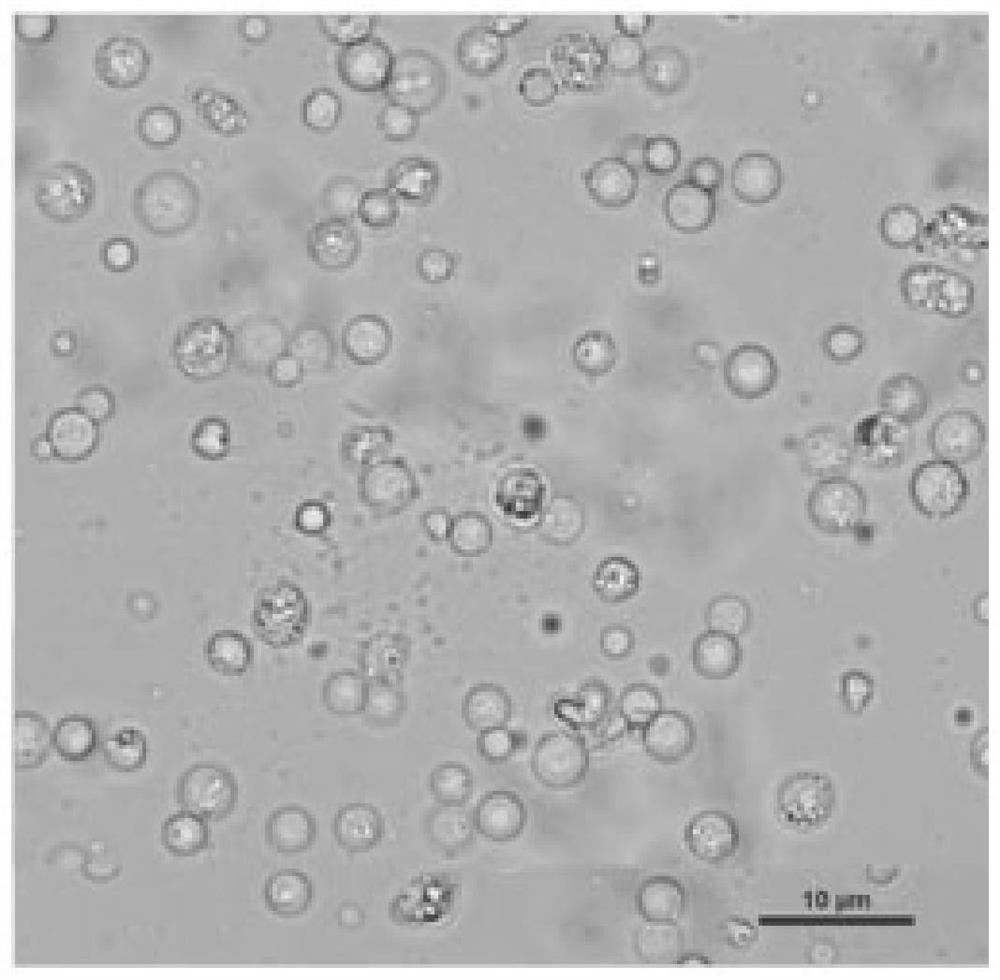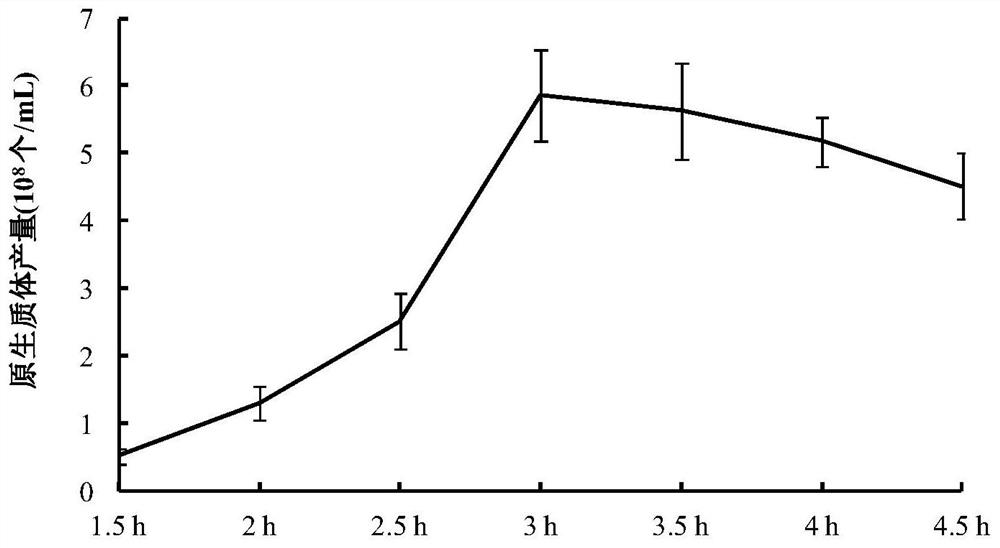Preparation and regeneration method of protoplasts of No. 1 race of banana fusarium wilt
A technology of banana fusarium wilt and protoplasts, applied in the direction of microorganism-based methods, biochemical equipment and methods, methods using spores, etc., can solve the lack of Foc1 protoplast preparation and regeneration methods, low protoplast preparation efficiency, and regeneration rate No high-level problems, to achieve the effect of increasing the number of preparations and regeneration rate, economical test cost, and improving regeneration rate
- Summary
- Abstract
- Description
- Claims
- Application Information
AI Technical Summary
Problems solved by technology
Method used
Image
Examples
Embodiment 1
[0057] 1. The preparation and regeneration method of Foc1 protoplasts, the specific operation steps are as follows:
[0058] (1) Preparation of Foc1 conidia
[0059] Fusarium oxysporum f.sp. cubence race 1 (Foc1) was inoculated in PDA medium and cultured at 28°C for 7 days. Use a puncher with a diameter of 5mm to remove the mycelial mass, add it to 250mL Chapeauer's medium, and culture it at 28°C and 150rpm for 3-4 days with shaking. Filter the culture medium with a 200-mesh cell sieve, centrifuge at 10,000×g for 10 min at 4°C, and discard the supernatant. After resuspending the pellet with NCM medium and diluting it, the Foc1 conidia suspension was prepared and counted with a hemocytometer to make the conidia concentration 2.5×10 8 individual / mL.
[0060] PDA medium preparation: potato 200g, glucose 20g, agar powder 9g, add ddH 2 Dilute the volume to 1L with O, and sterilize at 121°C for 20min.
[0061] Chase medium preparation: NaNO 3 3g,K 2 HPO 4 1g, KCl 0.5g, MgS...
Embodiment 2
[0087] The enzymatic hydrolysis time in Step 1 (3) of Example 1 was replaced by 1.5h, 2h, 2.5h, 3h, 3.5h, 4h and 4.5h respectively, and the production of protoplasts was observed.
[0088] Result analysis: after enzymolysis of Foc1 fresh mycelia for different periods of time, the obtained protoplasts were observed under a microscope. The results showed that the production of protoplasts increased rapidly after 1.5 hours of enzymolysis; A stable yield of protoplasts can be obtained, and the number of preparations can reach up to 6.0×10 8 pcs / mL( image 3 ).
Embodiment 3
[0090] The protoplast centrifugal force in embodiment 1 step 1 (4) is replaced by 220 * g (1500rpm), 400 * g (2000rpm), 600 * g (2500rpm), 880 * g (3000rpm) and 1600 * g (4000rpm) respectively ), and then microscopically observed the protoplasts.
[0091] Result analysis: The Foc1 protoplasts were precipitated under different centrifugal forces, and the obtained protoplasts were observed under a microscope. It was found that after the protoplasts were centrifuged at 400×g (2000rpm), they could not or were rarely observed in the supernatant conidia, indicating that a good sedimentation effect can be obtained under this centrifugal force; since protoplasts are not protected by the cell wall and are easily broken, the integrity of the protoplasts may decrease as the centrifugal force increases.
PUM
 Login to View More
Login to View More Abstract
Description
Claims
Application Information
 Login to View More
Login to View More - R&D
- Intellectual Property
- Life Sciences
- Materials
- Tech Scout
- Unparalleled Data Quality
- Higher Quality Content
- 60% Fewer Hallucinations
Browse by: Latest US Patents, China's latest patents, Technical Efficacy Thesaurus, Application Domain, Technology Topic, Popular Technical Reports.
© 2025 PatSnap. All rights reserved.Legal|Privacy policy|Modern Slavery Act Transparency Statement|Sitemap|About US| Contact US: help@patsnap.com



